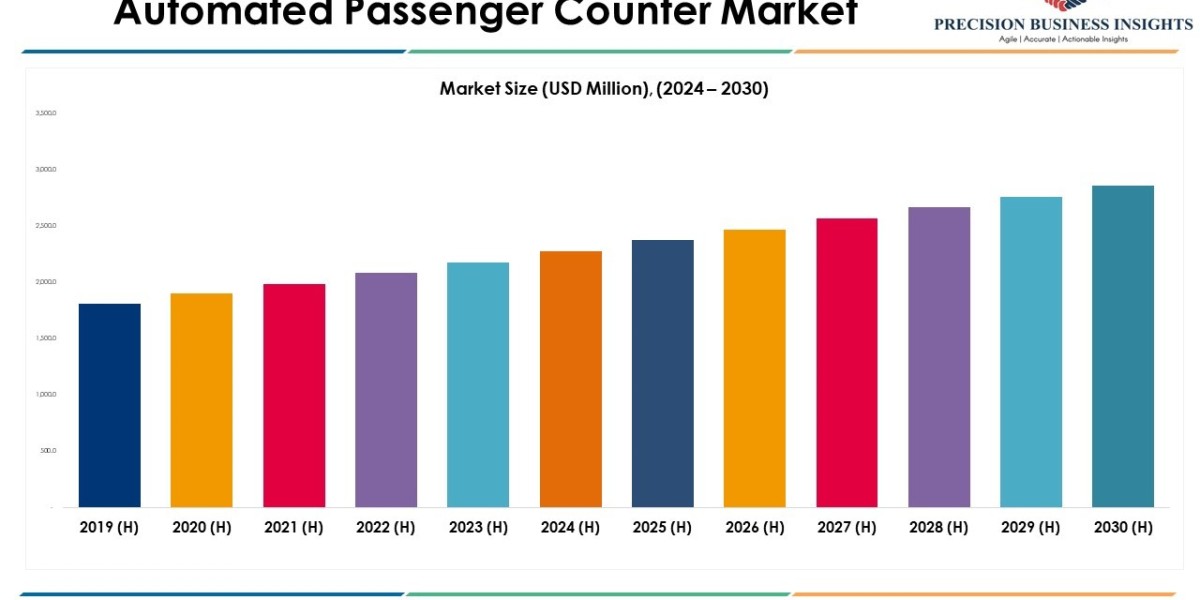As telemedicine software development becomes increasingly prevalent, the need for advanced technologies to enhance patient care and streamline processes is more critical than ever. This article explores how AI and data analytics are revolutionizing telemedicine, focusing on their impact on patient care, operational efficiency, and overall healthcare outcomes.
The Rise of Telemedicine
Telemedicine, the practice of providing medical services remotely using telecommunications technology, has seen significant growth in recent years. This trend accelerated during the COVID-19 pandemic, highlighting its potential to offer accessible, efficient, and cost-effective healthcare solutions. According to a report by the American Telemedicine Association, telemedicine usage surged by 154% in 2020 compared to the previous year, reflecting a broader acceptance of remote healthcare services.
The Role of AI in Telemedicine
AI, the simulation of human intelligence in machines, plays a pivotal role in enhancing telemedicine platforms. Its applications in telemedicine include diagnostic support, personalized treatment plans, and administrative automation.
- Diagnostic Support
AI algorithms, particularly those based on machine learning, have demonstrated remarkable accuracy in diagnosing medical conditions. For instance, AI-powered imaging analysis tools can detect anomalies in medical images such as X-rays and MRIs with high precision. These tools can assist healthcare providers in identifying conditions such as tumors, fractures, and infections more quickly and accurately than traditional methods.
A notable example is Google's DeepMind, which has developed AI models capable of diagnosing eye diseases from retinal scans with a level of accuracy comparable to that of experienced ophthalmologists. Such advancements enable telemedicine platforms to offer high-quality diagnostic services remotely, bridging the gap between patients and specialist care.
- Personalized Treatment Plans
AI enhances the ability of telemedicine platforms to provide personalized treatment plans by analyzing patient data, including medical history, genetic information, and lifestyle factors. AI algorithms can identify patterns and correlations that might not be evident to human clinicians, allowing for more tailored and effective treatment strategies.
For instance, AI can analyze data from wearable devices to monitor patients' health metrics in real-time. This information can be used to adjust treatment plans dynamically, ensuring that interventions are aligned with the patient's current health status. Personalized treatment plans improve patient outcomes by addressing individual needs and preferences.
- Administrative Automation
AI also streamlines administrative tasks in telemedicine, such as scheduling, billing, and patient management. Automated scheduling systems can optimize appointment bookings, reducing wait times and improving patient satisfaction. AI-driven chatbots and virtual assistants handle routine inquiries and administrative tasks, freeing up healthcare professionals to focus on direct patient care.
Data Analytics in Telemedicine
Data analytics involves the systematic analysis of large datasets to uncover insights and inform decision-making. In telemedicine, data analytics enhances patient care by providing actionable insights into patient health, treatment efficacy, and operational performance.
- Predictive Analytics for Early Intervention
Predictive analytics uses historical data and statistical algorithms to forecast future events. In telemedicine, predictive analytics can identify patients at risk of developing certain conditions or experiencing complications. By analyzing data from electronic health records (EHRs), wearable devices, and patient surveys, predictive models can alert healthcare providers to potential health issues before they escalate.
For example, predictive analytics can identify patients with a high risk of readmission after discharge, enabling healthcare providers to implement preventive measures and follow-up care to reduce readmission rates. Early intervention improves patient outcomes and reduces overall healthcare costs.
- Treatment Efficacy and Outcome Measurement
Data analytics enables healthcare providers to evaluate the effectiveness of treatment plans and interventions. By analyzing patient data, including treatment responses and health outcomes, telemedicine platforms can assess which strategies are most effective for different conditions and patient demographics.
This analysis helps in refining treatment protocols and ensuring that best practices are implemented. For instance, data analytics can reveal trends in medication adherence, helping providers address non-compliance issues and improve patient engagement.
- Operational Efficiency and Resource Management
Data analytics improves operational efficiency in telemedicine by optimizing resource allocation and streamlining workflows. Analyzing data on patient volume, provider performance, and service utilization allows telemedicine platforms to identify areas for improvement and implement strategies to enhance efficiency.
For example, analytics can highlight peak times for patient consultations, enabling better staff scheduling and reducing wait times. Additionally, data-driven insights into resource utilization can inform decisions about technology investments and infrastructure enhancements.
Enhancing Patient Care Through AI and Data Analytics
The combination of AI and data analytics in telemedicine transforms patient care in several key ways:
- Improved Access to Care
AI and data analytics enhance the accessibility of healthcare services by enabling remote diagnosis and treatment. Patients in underserved or remote areas can access specialist care without traveling long distances. Telemedicine platforms equipped with AI-driven diagnostic tools can provide high-quality care regardless of geographical barriers.
- Personalized Patient Experience
AI algorithms analyze patient data to tailor healthcare services to individual needs. Personalized treatment plans, based on a patient's unique health profile, lead to more effective interventions and better outcomes. Additionally, AI-powered virtual assistants offer personalized support, answering patient queries and guiding them through their care journey.
- Enhanced Monitoring and Follow-Up
Data analytics facilitates continuous monitoring of patient health through wearable devices and remote sensors. Real-time data collection allows healthcare providers to track patients' progress and intervene promptly if necessary. This proactive approach improves management of chronic conditions and ensures timely adjustments to treatment plans.
- Informed Decision-Making
AI and data analytics provide healthcare professionals with valuable insights for making informed decisions. By analyzing large volumes of data, AI models identify trends and correlations that can guide clinical decisions. This evidence-based approach enhances the accuracy of diagnoses and the effectiveness of treatment plans.
- Streamlined Operations
AI-driven automation and data analytics streamline administrative tasks, reducing the burden on healthcare staff and improving overall efficiency. Automated scheduling, billing, and patient management systems enhance operational workflows and allow healthcare professionals to focus on patient care.
Challenges and Considerations
While AI and data analytics offer numerous benefits, several challenges must be addressed to fully realize their potential in telemedicine:
- Data Privacy and Security
The use of AI and data analytics in telemedicine raises concerns about data privacy and security. Protecting patient information from unauthorized access and ensuring compliance with regulations such as the Health Insurance Portability and Accountability Act (HIPAA) is crucial. Robust encryption, secure data storage, and regular audits are necessary to safeguard sensitive health data.
- Algorithm Bias
AI algorithms are only as good as the data they are trained on. If the training data is biased or unrepresentative, the resulting algorithms may produce biased or inaccurate results. Ensuring diverse and comprehensive data sets, along with ongoing monitoring and validation of AI models, is essential to mitigate bias and ensure equitable care.
- Integration with Existing Systems
Integrating AI and data analytics tools with existing telemedicine platforms and electronic health records can be complex. Compatibility issues, data interoperability, and system integration challenges must be addressed to ensure seamless functionality and accurate data exchange.
- Patient Acceptance and Trust
Patients may have concerns about the use of AI in their healthcare. Building trust through transparent communication, educating patients about the benefits and limitations of AI, and ensuring that AI tools complement rather than replace human expertise are important for fostering acceptance.
Future Directions
As technology continues to evolve, the future of AI and data analytics in telemedicine holds exciting possibilities:
- Advancements in AI Technology
Future advancements in AI, including more sophisticated machine learning algorithms and natural language processing capabilities, will enhance diagnostic accuracy and personalized care. AI models will become increasingly adept at understanding complex medical data and providing actionable insights.
- Enhanced Data Integration
Improved data integration and interoperability will enable a more comprehensive view of patient health. Combining data from various sources, such as EHRs, wearables, and genomics, will facilitate more accurate predictions and personalized treatment plans.
- Telemedicine Expansion
As telemedicine expands globally, AI and data analytics will play a crucial role in addressing healthcare disparities and improving access to care in underserved regions. AI-powered telemedicine solutions will become more prevalent, offering advanced care options to a broader population.
- Ethical Considerations
Ethical considerations will continue to be a focus as AI and data analytics become more integrated into telemedicine. Ensuring that AI technologies are developed and used responsibly, with a focus on patient welfare and equity, will be essential for maintaining trust and delivering high-quality care.
Conclusion
The integration of AI and data analytics in telemedicine represents a transformative advancement in healthcare. By enhancing diagnostic capabilities, personalizing treatment plans, and improving operational efficiency, these technologies significantly improve patient care. As telemedicine continues to evolve, leveraging AI and data analytics will be crucial in shaping the future of healthcare delivery. Addressing challenges related to data privacy, algorithm bias, and system integration will be essential for maximizing the benefits of these technologies and ensuring equitable and effective care for all patients.













